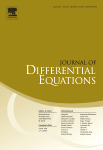 After we reported on a retraction for a 13-year old paper by Mohammed Aassila, a reader alerted us to two retractions and an editorial notice for the mathematician. Each of the notes is several years old.
After we reported on a retraction for a 13-year old paper by Mohammed Aassila, a reader alerted us to two retractions and an editorial notice for the mathematician. Each of the notes is several years old.
That makes a total of four problematic papers for Aassila. Each is plagued by the same thing: plagiarism.
Here is the retraction note for “The influence of nonlocal nonlinearities on the long time behavior of solutions of diffusion problems,” published in the Journal of Differential Equations:
This article has been retracted at the request of the editor.
Reason: This paper was discovered after publication to have been plagiarized from earlier work by Michael Chipot and Luc Molinet, presented in their paper Asymptotic behaviour of some nonlinear diffusion problems, published in volume 80 of Applicable Analysis in 2001 and in the book Elements of Nonlinear Analysis published by Birkhaeuser in 2000. We very much regret this error, and offer our apologies to Professors Chipot and Molinet.
We have found recently that this paper was plagiarized from work by Liping Liu and Ming Mei, presented in their paper entitled “A better asymptotic profile of Rosenau–Burgers equation”, published in Applied Mathematics and Computation 131 (2002), pp. 147–170. We very much regret this error and offer our apologies to the authors.
And the retraction for another paper, from Elemente der Mathematik, also published by the European Mathematical Society:
The article M. Aassila “Some results on Heron triangles”, Elem. Math. 56 (2001), 143–146, was received by the editors on April 17, 2001, and acknowledged on April 24, 2001. Following a positive referee’s report, a revised version of the initial manuscript was sub-mitted on July 17, 2001. The manuscript was accepted for publication on September 5, 2001.
In an e-mail of October 27, 2005, and in a detailed letter dated May 26, 2006, Mr. Alpar-Vajk Kramer advised the Editorial Board about the article A.-V. Kramer and F. Luca “Some remarks on Heron triangles”, Acta Acad. Paed. Agriensis, Sec. Math. (N.S.) 27 (2000), 25–38, which had appeared in December 2000. Their manuscript was received by the editors of Acta Acad. Paed. Agriensis on April 12, 2000, and was accepted for publication after a positive referee’s report not later than July 10, 2000.
With regard to the contents, the article of M. Aassila shows strong similiarities to the article of A.-V. Kramer and F. Luca; it even contains several identical formulations. On the other hand, the article of A.-V. Kramer and F. Luca is not mentioned as a reference in M. Aassila’s paper.
By virtue of this evidence a violation of copyrights in the present case cannot be excluded. Unfortunately, the Editorial Board was not able to get a counter-statement from M. Aassila since he could not be reached, neither by ordinary mail nor by e-mail.
The Editorial Board would like to ask the readership of Elemente der Mathematik to take note of this communication and expresses its regrets towards Mr. A.-V. Kramer and Mr. F. Luca in case a violation of copyrights has taken place.
We emailed the European Mathematical Society to clarify if the other notice is meant as an official retraction.
Director Thomas Hintermann told us:
Fortunately, such incidents are very rare. There is no universal policy of how to deal with cases of plagiarisms once they are known, but of course there is a policy in general about behavior of scientific circles (see the EMS Code of Practice, http://www.euro-math-soc.eu/sy
stem/files/uploads/COP-approve d.pdf). Technically, I do not see how articles, once published, can be withdrawn, because they are already spread throughout the world. I think that publishing suitable comments, such as those you cite, are much more useful than removing the articles from the page.
However, retraction guidelines from the Committee on Publication Ethics clearly state “plagiarism” as a cause for retraction. When we sent these guidelines to Hintermann, he replied:
Thanks for the information. I was not aware of the COPE guidelines. It may not be straightforward to tweak our website accordingly, but I will be happy to look into it when I have the time.
We could not find current contact info for Aassila.
Hat tip: Nils Berglund
Like Retraction Watch? Consider making a tax-deductible contribution to support our growth. You can also follow us on Twitter, like us on Facebook, add us to your RSS reader, and sign up on our homepage for an email every time there’s a new post. Click here to review our Comments Policy.
What is with all these plagiarized papers getting published? When I was in grad school a fellow student was expelled from the program the first time he was found to have plagiarized. One strike and he was out.
Many of these retracted papers are written by Ph.Ds. Are programs so desperate for students that they do not vet their applicants or care what kind of product they produce after they are admitted, then get their degrees. Doesn’t it reflect badly on a school when they award degrees to cheaters? What is wrong with calling out bad actors the first, second, third, well you see what I mean…